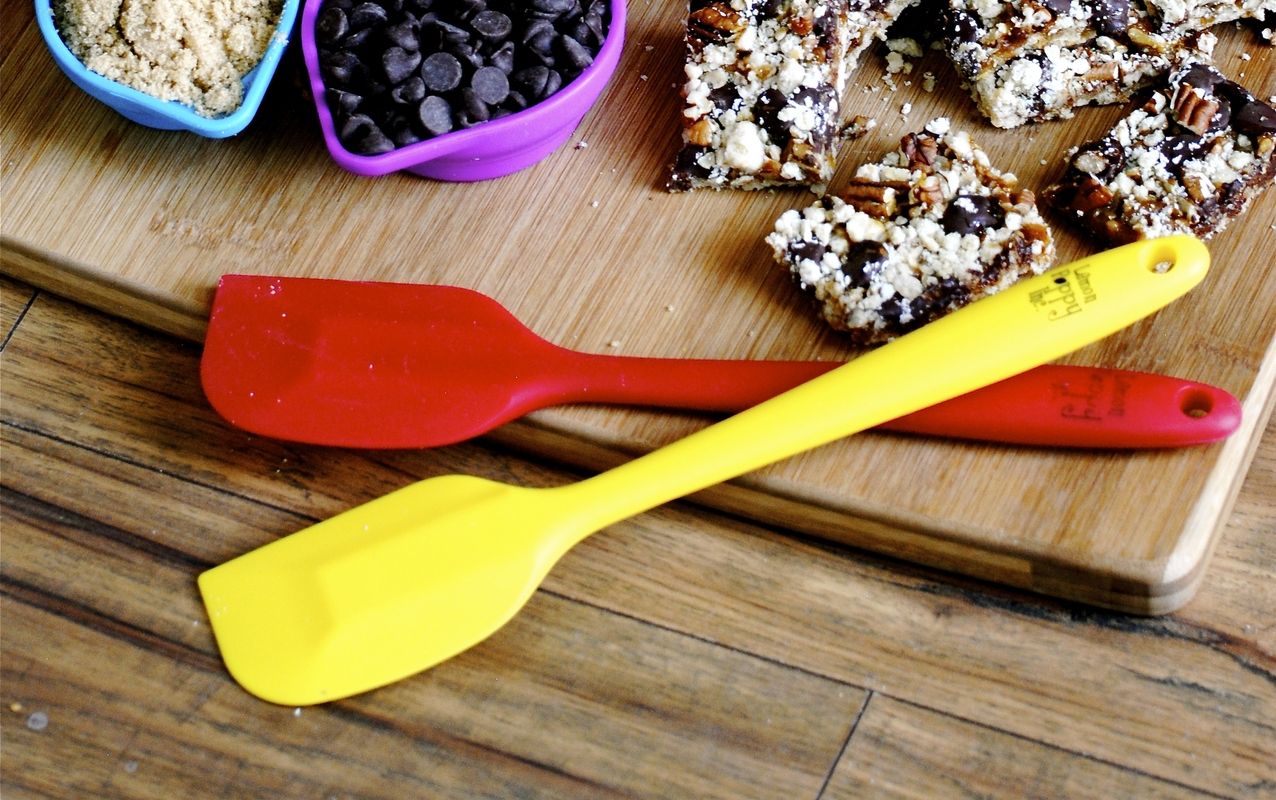Unsung Hero: Silicone Spatula
It's the most underrated utensil in the kitchen.

When I was in college, I spent half of one summer vacation living in a Zen monastery, where we (like most pursuing this path) practiced oriyoki, an traditional, ceremonial eating ritual preceding every meal that reinforced mindful. One element of this practice is that we scrape off as much food as possible from our bowl, so that we can wash it with only a little bit of water (and then subsequently drink the wash water). We each had a wooden “oriyoki set” which is our eating bowl, utensils, and also a tiny spatula that was used to clean our bowl as much as possible before rinsing it. This was my first memory of noticing how incredibly bad a wooden spatula is at scraping food.
Since the monastery, I’ve learned to pay attention to the small things, and among them was how efficiently a silicone spatula can wipe off everything in its path. It's the most underrated utensil in the kitchen.
The main function of a silicone spatula is that it conforms around the surface that we are wiping. It comes highly recommended among bakers to make sure they can wipe off every last speck of their dough or cream from the bowl. Very few tools in the kitchen can achieve this heroic feat, but the implications of this particular function are often unsung.
The most obvious is that it wipes incredibly efficiently, which is helpful at every phase in your cooking. Imagine you are making a pot of spaghetti sauce and you are reducing it in a pot. If there is sauce on the sides of the pot, then the heat of the pan is going to encrust the sauce on the sides, which makes it harder to clean. You can use a silicone spatula to swipe all that sauce into the main liquid area. When you’re putting away the leftovers, you can use a silicone spatula to make sure you get every last drop from the pot to the Tupperware. And lastly, when you’re washing your bowl (with all that residual sauce) you can use a silicone spatula to wipe off all the sauce so that you don’t have to get it all in your sponge (which then prolongs the lifespan of your sponge).
The ability to conform to surfaces means that it’s good for wiping things up (instead of off). I’ve found it to be the most effective tool for making delicate omelettes, where I need to make sure that my utensil can pick up the edge without breaking it.
Silicone is also heat resistant, stain resistant, and anti-microbial (all to an extent). You don’t have to worry about melting plastic utensils, or staining wooden ones. Everything just slides right off, which makes it both easy to clean with, and easy to clean. If you need to use the same utensil for a different dish without contamination, just slap it under running water. And despite being tough, it’s also a delicate enough tool to treat your nonstick pans with care. You don’t want to use metal utensils with nonstick purposes, plastic can melt, and wood is sometimes too thick and clunky if you have a small (8”) nonstick. This is where silicone (and well-edged spatula) can do the trick.
Many will reach for the trusted wooden or metal spatula for their rigidity--a characteristic good for scraping off the delicious fond off of a pan sear, or sautéing a heavy pot of root vegetables. Cooks will need that rigidity for function, but also to make sure that a flexing motion doesn’t whip foodstuffs across the range. I’m not saying that a silicone spatula can replace a rigid one, but a good cook will know their tools and which ones to use. For most people, I think that they grab their rigid spatulas out of habit, or because it’s in reach. For some reason the silicone spatula is put away in a drawer somewhere because there’s an idea that it’s “specialized hardware.” It's not.
I’m here to evangelize the good word of the silicone spatula. It’s utilitarian as fuck, and it needs to be in reach more often. So take it out of your drawer, and maybe try using it solely as a dishwashing tool first. I promise you’ll see the light and graduated it as your trust sidekick for everything.
@westleydang Newsletter
Join the newsletter to receive the latest updates in your inbox.



